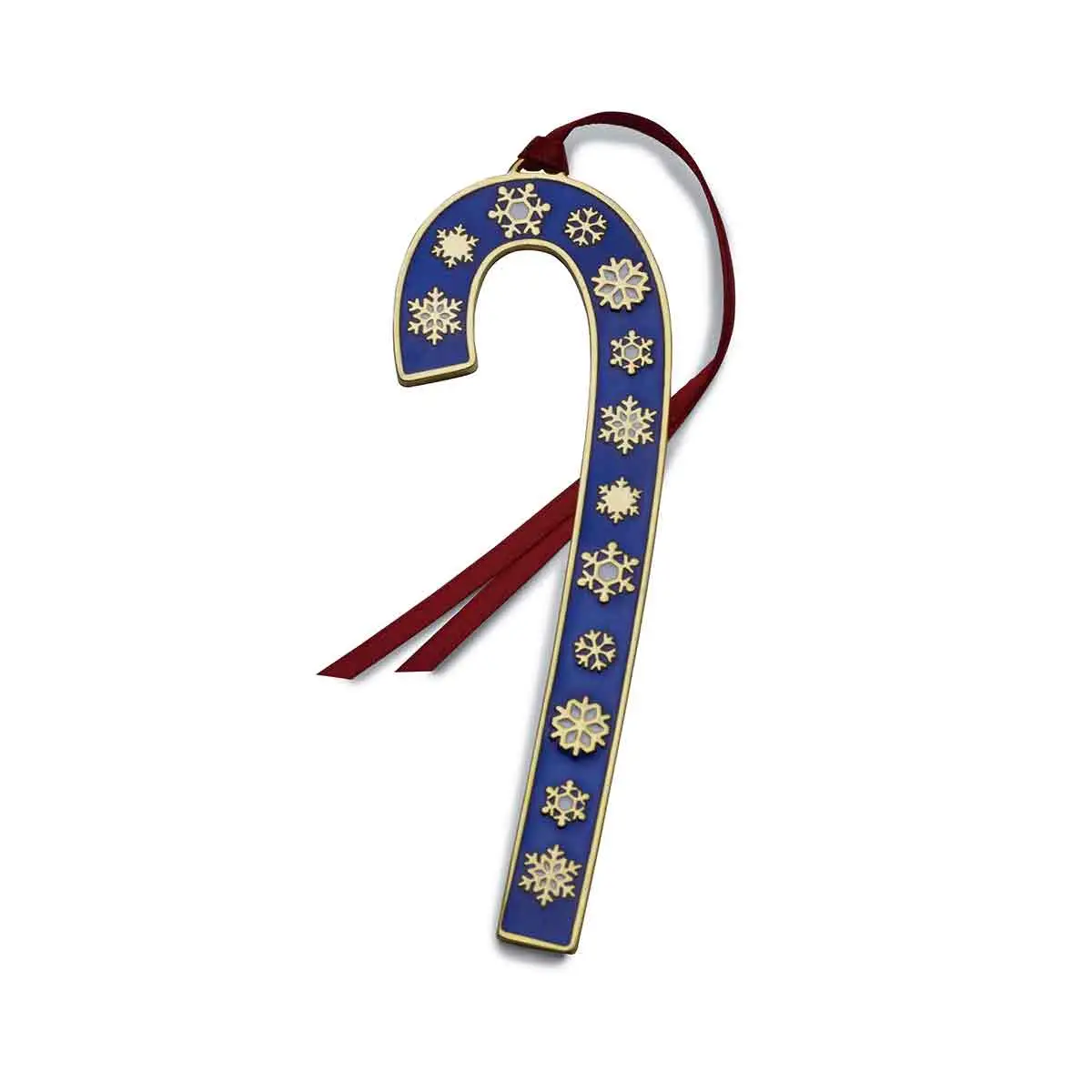A Brief History Of The Wallace Candy Cane

A History Of The Wallace Candy Cane
The 2024 Wallace Candy Cane is just one of the many classic ornaments that we offer at Silver Superstore. This piece has been released annually for decades, but where did it get its start?
A Brief History Of The Candy Cane
If a legend dating to 1670 is to be believed, the first candy cane was the brainchild of a German church choirmaster. Hoping to keep the little ones quiet during a reenactment of the Nativity, he asked a local confectioner to make what he described as “sugar sticks” for them. To justify doling out treats in church, the choirmaster suggested adding a crook at the top; with any luck, that would inspire the children to reflect on the humble shepherds in the scene.
This lovely story may have some basis in truth, but the first stick candies didn’t debut until confectioners competed for prizes at an exhibition in Massachusetts in 1837. The earliest recipe for a straight peppermint candy stick was published in 1844, and there’s mention made of a candy cane in an 1866 literary work. Candy canes as we now know them didn’t show up on Christmas trees until the early 1880s.
They’re still showing up today.
The Wallace Silversmiths Candy Cane
Wallace launched its popular silver sleigh bell ornament series in 1971. Competitors were turning out snowflakes, crosses, Christmas trees and other emblematic designs.
In 1981, Wallace started producing annually issued candy canes as well. The ornaments in this series are made of gold plate and enamel and have charming seasonal motifs. As with the sleigh bells, each year’s candy cane is uniquely detailed. All are painted in traditional Christmas colors with a little lime green occasionally thrown in for variety. Every piece is a testament to thoughtful design and fine craftsmanship.
Wallace started making sterling silver candy canes in 2008 while continuing the traditional line. The silver ornaments, which are dressier than the enamel ones, incorporate Wallace flatware patterns. The Sir Christopher, Impero and Coburg patterns are recent examples.
Both ornament styles are timeless. When the trinkets are carefully unwrapped on a cold winter day, they inspire people to make a fire, bake cookies and revisit old family albums. They will make future generations smile.
Each colorful enamel candy cane has a Christmas symbol that repeats over the hook and down the length. The classic stripes are formed from gold plate. All the ornaments are around 4 ½ inches long and 1 ½ inches wide.
The first, issued in 1981, featured alternating red and green Christmas bows. Other themes in the series include holly, gingerbread men, Santa Claus hats, mittens, ice skates, snowflakes, snowmen, Christmas trees, toy soldiers and reindeer. The 26th edition featured a string of colored lights, and the 2004 issue sported a little train on a curving track.
This year’s 39th edition reverts to the red and green Christmas bow motif, but the shades are much subtler than in the original. The 2019, 12th-edition sterling silver candy cane features the Shenandoah flatware pattern. This timelessly elegant piece will add an eye-catching glimmer to your tree or mantel.
Each ornament comes with a gift box, a protective velvet pouch, a festive red bow for hanging and a brochure. The Wallace mark is stamped on the reverse side.
Treasured Heirlooms
Wallace Silversmiths has 185 years of experience. Its products are designed to last, retain their beauty and stay in families for years to come. You can make your ornament even more personal by adding an engravable gift tag. We offer a number of distinguished fonts.
These collectibles are in high demand. They often become hard to find or sell out before it’s time to decorate the tree. Don’t delay ordering your special memento of the season.